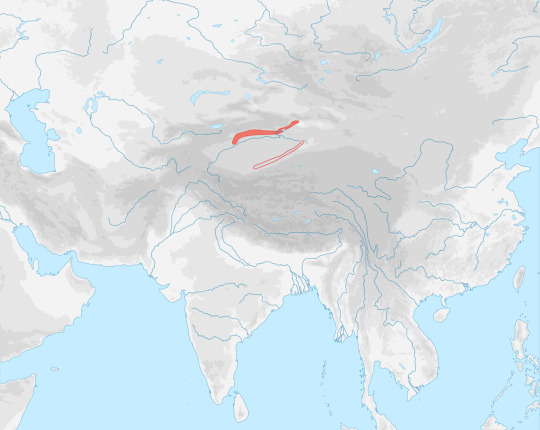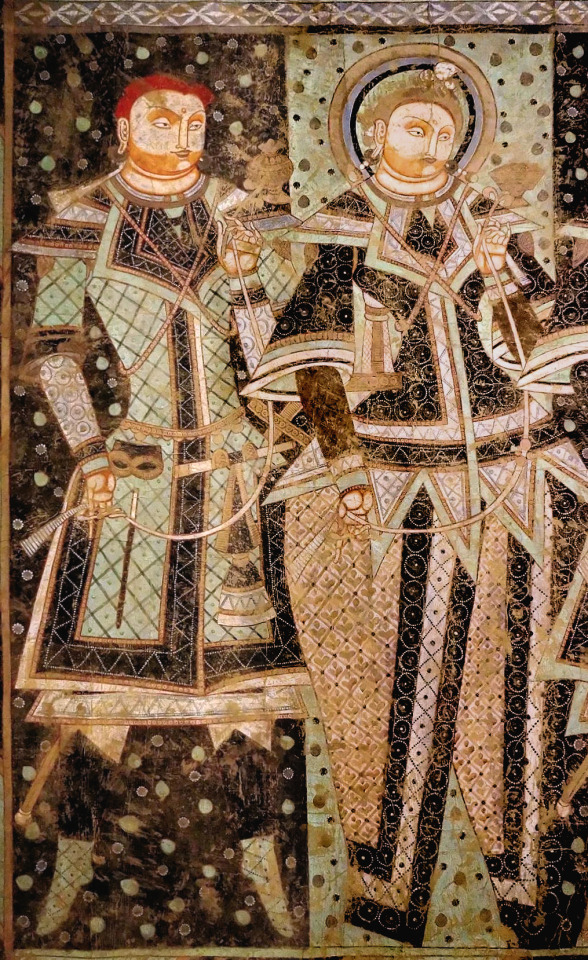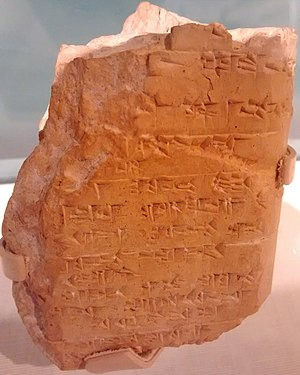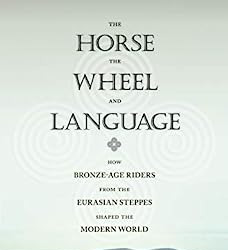#indo-european
Note
Do you have any thoughts on the translation scene in Goncharov? I haven't seen a lot of people talking about it but it's a pretty pivotal scene and given that what they're doing is not dissimilar to a conlang imo i figured you might have some good insights
*sigh*
I figured someone was going to ask this eventually...
So listen, the whole translation scene in Goncharov is not technically conlang-related. It's actually even more brilliant, but it's hard to explain.
Since the tutor doesn't speak Russian and the nurse only speaks Italian, the aphasiac Soviet spy has to use an impromptu series of hand gestures to indicate that he either does or doesn't understand. I mean, you can glean that from the subtitles, so that's no big revelation.
But this is where it gets weird and...I mean, linguistically controversial, to say the least, but it was the 70s.
As the tutor and the nurse attempt to communicate with him and each other, they begin to winnow down their vocabulary to words that are cognate between Italian and Russian. And through this back and forth, the languages seem like they're blending, but what they're actually doing is reversing the sound changes of Italian and Russian until they both end up, improbably, at Proto-Indo-European. It's like something you'd see in Fantasia, but aural! It's...utterly bizarre.
And, of course the final word that the nurse and the tutor utter simultaneously, the one that brings the spy to tears, is *bʰewdʰ- "awake, aware"—which, I mean, knowing how the rest of the movie goes...yeah. Bombshell. And it's crazy to me that they didn't subtitle it! Like, you pretty much have to be a PIE scholar to get that, and the entire subplot hinges on it! I mean, bold isn't the word for it. Unfathomable. Cannot believe they got away with that...
Rumor has it that Morris Halle consulted on the film, but he's adamantly refused to talk about. (For years, he'd end all his guest lectures with, "Are they any questions about anything other than Goncharov?") He never once confirmed whether or not he was involved (of course, he wasn't credited, but that wouldn't be unusual for the time even if he was involved).
I can see why you'd think it would be a conlang, but the reverse-engineered sound changes were so precise, and the whole thing so by the book, that there really wasn't any actual invention. It was all Indo-European!
#goncharov#conlang#language#pie#indo-european#proto-indo-european#film#linguistics#morris halle#language evolution#historical linguistics
3K notes
·
View notes
Text
Tocharian
Around 3,000 BCE, speakers of an early branch of the Indo-European languages decided to go for a little hike, and wound up all the way in South Siberia.

A few thousand years later, scholars discovered manuscripts in northwestern China dating to 500–800 CE that were shown conclusively to be written in a language from an early branch of Indo-European. They named this language Tocharian.

The discovery of Tocharian upset decades of research on ancient Indo-European languages and revitalized interested in them for two reasons:
Nobody even suspected that another branch of Indo-European existed, let alone in China’s Tarim Basin.
It was previously thought that the Indo-European languages were divided into eastern and western groups, based on whether the /k/ sound had changed to an /s/. The western languages that retained the /k/ were called centum languages (the Latin word for ‘hundred’, pronounced with an initial /k/), while the eastern languages with /s/ were called satem languages (the Avestan word for ‘hundred’). Yet Tocharian was a centum language sitting further east than almost any other language in the family. (Linguists later hypothesized that the centum-satem split wasn’t so much an east-west split as it was a spread of /s/ from the center of the language family outward, a change which didn’t reach the furthest members of the family).

Tocharian was written in a variant of Brahmi; here’s a sample of Tocharian script on a wooden tablet:

If you really want to challenge yourself, here’s a problem about Tocharian from the International Linguistics Olympiad:
#Tocharian#linguistics#language#historical linguistics#Indo-European#history#archaeology#China#Siberia#lingblr#langblr
252 notes
·
View notes
Text
Time Travel Question 22: Ancient History X and Earlier
These Questions are the result of suggestions from the previous iteration.
This category may include suggestions made too late to fall into the correct grouping.
Please add new suggestions below if you have them for future consideration. All cultures and time periods welcome.
#Crinoids#Time Travel#Paleozoic#Proto-Indoeuropean#Ancient Religion#Neolithic#The Land of Punt#Ancient World#Linguistics#Early Humans#Tocharian#Indo-European#Yuezhi#Chinese History#Tarim Basin#Steppe Nomads#The Bronze Age#Cretaceous#Pharaoh Hatshepsut#Ancient Egypt#Wu Zetian#Minoans
130 notes
·
View notes
Text
During excavations at the ancient Hittite capital, Hattusa, archaeologists have found a clay tablet that contains a previously unknown language!
107 notes
·
View notes
Text
Cuneiform is such a sneaky writing system, so many languages use it. Wonderful discovery.
109 notes
·
View notes
Text

"We don't know when fairy tales began or what their origin was, but they are especially prevalent among Indo-European speakers and in the cultures with which Indo-European came in contact on the steppes".
-Brian Hayden.
Arthur Rackham's illustration for The Old Woman in the Wood.
#Brian Hayden#Arthur Rackham#grimm fairy tales#Grimm brothers#the old woman in the woods#indo-european#european tradition#steppe#traditionalism#myth#evola#carl jung#archetypes#joseph campbell#fairy tales#sacrality#sacred
133 notes
·
View notes
Text
157 notes
·
View notes
Photo


Tocharian donors, Kizil caves, 6-7th century
86 notes
·
View notes
Text

The Dagda
#the dagda#celtic#pagan#indo-european#heathen#paganism#mythology#aesthetic#ethereal#druid#ire#ireland#irish#scottish#scotland#painting#illustration
12 notes
·
View notes
Text






Kanun: Shattered Lives in a Hidden Albania
"Kanun is a body of law which began regulating the lives of the Albanian people between the 13 and 1400's; it is still practiced in many parts of the country, especially in the north. Blood revenge is just the best known aspect of Kanun. It regulated relations with the Catholic church, marriages, property, economic activities, social order and the punishment of those guilty of crimes. Tragedy and drama are basic elements of Kanun. It developed because State control over the administration of justice in that part of the country was historically weak. With the fall of Communism in 1991, and the resulting weakening of law and order nationally, the number of vengeance killings has multiplied. Today, in a country that is trying desperately to rebuilt itself and one where the judicial system is still not able to guarantee the enforcement of State laws, this resorting to assassins in the name of Kanun has assumed really threatening proportions. The Albanian mass media have documented that since the mid-1999's, the crimes, horrors, and atrocities committed in the name of Kanun are a growing cancer even as the precepts of the ancient code are completely misinterpreted and often used as a pretext to justify common criminal acts."
- Massimo Mastrorillo
29 notes
·
View notes
Text
Hittite
In the 1800s archaeologists discovered cuneiform tablets written in an unknown language which they named Hittite.
In the language, Hittite is called 𒌷𒉌𒅆𒇷 nišili ‘the language of the city of Neša’.
In 1902 and 1915, Hittite was shown to be a previously-unknown member of the Indo-European language family, which was remarkable for several reasons:
The Hittite tablets remain to this day the oldest written records of any Indo-European language.

Hittite lacks masculine and feminine grammatical gender like most other Indo-European languages. Instead it contrasted animate vs. inanimate nouns, providing an important piece of evidence that Proto-Indo-European too only distinguished animate vs. inanimate nouns but not masculine vs. feminine.
In 1879, linguist Ferdinand de Saussure suggested that Proto-Indo-European (the first Indo-European language) had a type of sound called a laryngeal consonant, but that this sound had disappeared from all the surviving descendant languages, leaving only subtle traces on the sounds around them. This hypothesis went unproven until the discovery of the Hittite tablets, which contained exactly the laryngeal sounds that Saussure had predicted—a remarkable confirmation of his hypothesis.

Indo-European was traditionally divided between east and west into centum and satem languages (the words for ‘hundred’ in Latin and Avestan respectively), based on whether they retained the initial /k/ sound (centum languages) or had changed to an /s/ sound (satem languages). Hittite, however, is a centum language with /k/s even though it is located to the east in the satem area. This fact (and the discovery of Tocharian, another exception) forced linguists to rethink the east-west division and instead posit that the change from /k/ > /s/ started in the center of the family and spread outward like a wave.

If you’re interested in learning more about the history of the Indo-European language family, my book recommendation is The horse, the wheel, and language:

130 notes
·
View notes
Note
Could you please talk more about how/why agreement systems develop in language? I always feel that agreement systems are poorly justified in my conlanging
Agreement systems are retained in language because the redundancy strengthens the signal. It's better to think about linguistics systems in terms of "why didn't speakers get rid of this" as opposed to "why did this come about in the first place". Sometimes things happen randomly. They're retained because they're useful.
But like, consider gender in English. We used to have it. Gender was mostly defined by the endings of words. We lost all the endings. We lost some major forms of agreement (consider that French still has different articles). At a certain point, it was impossible to tell if a noun was m/f/n, so of course English lost its gender system. It was no longer useful. In fact, going even further, it was the opposite of useful, because it was totally unpredictable and didn't buy you anything.
As an example of the latter, there's this sign system called Signed Exact English (SEE). It's often (not always, but often) pedaled as a replacement for ASL, because it will "help" Deaf signers learn English. One of the features it retains is the distinction between "a" and "an". English speakers know how to do this instinctively: You use "a" before a noun phrase (not a noun, but a noun phrase) that begins with a consonant sound, and you use "an" before a noun phrase that begins with a vowel sound (so "umbrella" gets "an", but "union" gets "a"). In SEE, there's a separate sign for "a" and "an", and then ASL signs are used for English words like "man" and "old". So then you have to sign:
A MAN
AN OLD MAN
But, of course, the difference is based on the sound of the English pronunciation of the word the sign stands for, so it is quite literally impossible to predict for a Deaf signer. It has to be memorized. Which is an extraordinary task. Basically, all nouns, adjectives, and adverbs (consider "a really old man") have to be dumped in either the A class or the AN class with absolutely no way to predict which will be in which.
This is a great example of a feature that would quickly die in a natural language.
So looking at gender, the question is how useful is it? If it's (a) predictable, and (b) spread across multiple areas of the language, then it's more useful, and more likely to be retained. If you look at Spanish, agreement is present in pronouns, adjectives, demonstratives, and articles. The gender of a noun highly predictable (not 100%, but highly predictable). That's a stable gender system. French is similar, but the gender is less predictable for nouns. If one was going to lose gender first, you'd predict French. Even so, it's still predictable enough that more will probably have to happen for French to actually lose it.
As for where it comes from, if you want to read a detailed account of the development of Indo-European gender, this is an intro. Most of the time it's the incorporation of pronouns or small, generic nouns that become commonly associated with particular classes and are used as modifiers. We've got a pretty good example of the development of noun class in Sarkezhe, season 4 of LangTime Studio. If you want to see it done from beginning to end, check that out.
Hope that helps!
#conlang#language#gender#development of gender#grammatical gender#noun class#linguistics#pie#indo-european#asl#see#signed exact english#spanish#french#sarkezhe#lts#langtime#langtime studio#sign language
146 notes
·
View notes
Text
Did Indo-European languages emerge from the Fertile Crescent, or the Steppe? Or both? A groundbreaking research study, has decoded the common ancestor of Indo-European languages, going back 8,100 years, to discover the origins of the linguistic heritage of billions.
57 notes
·
View notes
Text
I know this isn't everybody's cup of tea, but it is mine. I love the history of languages. Comes of teaching a very old one, I guess.
20 notes
·
View notes
Text

"Pizarro started from nothing, rising to a life of conquest and glory. He toppled the Inca with an act of Odyssean cunning. After years of war, he went out in a blaze of glory, fighting off assassins even in his old age… is this not Bronze Age Mindset?
Is this not greatness?".
-Alaric the Barbarian.
#Francisco de Pizarro#Pizarro#conquistadors#Spaniards#Spanish empire#Crown of Castile#Bronze Age Mindset#Alaric#Alaric the Barbarian#glory#indo-european#Europe#Tradition#Conquest#The Odyssey#Homer#castile#Exploration#Isabel of Castile#Catholic monarchs#Catholic Queen#cross of burgundy#myth#frontier#America
14 notes
·
View notes
